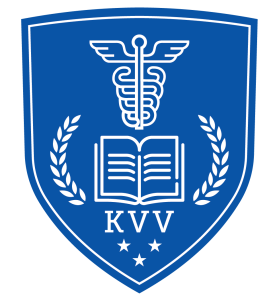Quadrant -I (Video)
Estimation of Urine Creatinine by Jaffe's Method
Quadrant - II (Study Material)
1. Study materials- Part A
View File2. Study materials- Part B
View File3. Estimation of Urine Creatinine by Jaffe's Method
Additional study material - Additional Study material - Creatine is produced from three amino acids viz; glycine, arginine and methionine in kidney, liver and pancreas. Then it is released into the blood and transported to the muscles and brain, where it is phosphorylated and stored as high energy compound phosphocreatine. Creatinine is one of the non-protein nitrogenous substances (NPN). NPN are a group of compounds that contain nitrogen but are not proteins e.g. urea, uric acid, creatine, ammonia, and amino acids. Creatinine is an anhydride of creatine; it is the end product of muscle metabolism. Creatinine levels are proportionate to body’s muscle mass, women, obese individuals and children have less creatinine than healthy men because of less muscle mass. Creatinine levels are measured from blood and urine to assess kidney function and to screen kidney damage. Kidney is the only route through which creatinine is excreted out with constant clearance rate. Any damage or obstruction to the kidney influences the creatinine excretion. Therefore, measurement of creatinine is an ideal indicator of kidney health. Clearance is defined as it is the amount of blood or plasma completely cleared of specific substance in unit time. Creatinine clearance (CrC) is defined as it is the amount of blood or plasma completely cleared of creatinine in unit time. Other tests like urea clearance test, inulin clearance test, estimated glomerular filtration rate (eGFR) etc are used to assess kidney functions. Blood urea nitrogen (BUN), urine albumin to creatinine ratio, cystatin C can also be used to assess kidney damage in the situations where creatinine estimation alone is not reliable. Chemical method for creatinine estimation – Jaffe’s reaction by using alkaline picrate. Enzymatic methods for creatinine estimation – Creatinine deaminase, Creatininase, Creatinase, reverse phase HPLC. The reference range for serum creatinine - 0.6 to 1.2 mg/dl The reference range for urine creatinine - 0.8 to 1.5 Gm/day Creatinine coefficient Reference values: Women – 20 to 22 mg/kg/day Men - 24 to 26 mg/kg/day Creatinine clearance Reference values: Women – 75 to 115 ml/min Men - 85 to 125 ml/min The serum creatinine levels are increased in conditions like; Starvation Pregnancy Febrile and muscle wasting diseases Diabetes mellitus Hyperthyroidism Urinary tract obstruction Chronic nephritis Renal failure Early stage of muscular dystrophy etc. The urine creatinine levels are increased in physiological conditions like; Intense exercise, intake of non-veg diet, intake of creatine supplements etc. Urine creatinine levels are increased in pathological conditions like; Acromegaly (increased growth hormone secretion in adults) Gigantism (increased growth hormone secretion in children and adolescent) Diabetes mellitus (increased muscle catabolism) Urinary tract infection Urine creatinine levels are decreased in; Paralysis Muscle atrophy Advanced renal diseases.
Quadrant - III (Assignments)
1. Estimation of Urine Creatinine by Jaffe's Method
Following questions might be asked in the examination 1. What is creatinine? 2. What is the difference between creatine and creatinine? 3. Which amino acids are required for creatine biosynthesis? 4. Where the creatine formation occurs? 5. What is the biomedical significance of creatine? 6. What is the biomedical importance of creatinine? 7. What are non-protein nitrogen substances? 8. Why creatinine levels are high in men than in women? 9. What is GFR? 10. What is creatinine clearance and its reference values? 11. Why assessment of inulin clearance is better determinant of kidney health over creatinine or other clearances? 12. Which different methods are used for creatinine estimation? 13. What is the principle of Jaffe’s method? 14. What is the reference range of plasma creatinine? 15. What is the reference range of urine creatinine? 16. What is creatinine coefficient and reference values? 17. In which different conditions serum creatinine levels are increased? 18. In which different conditions urine creatinine levels are increased? 19. In which different conditions urine creatinine levels are decreased?
